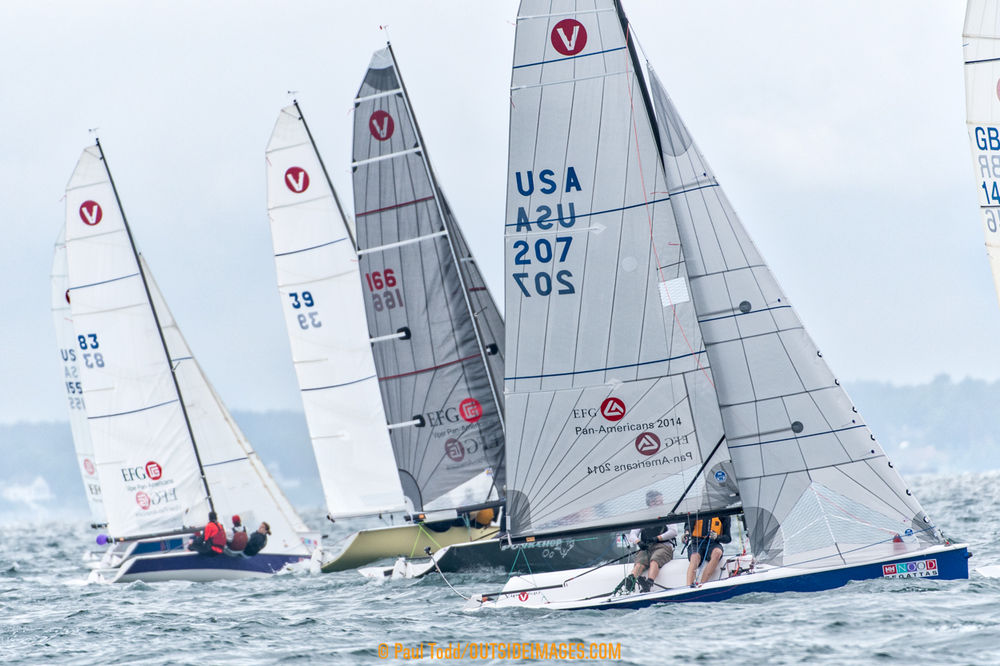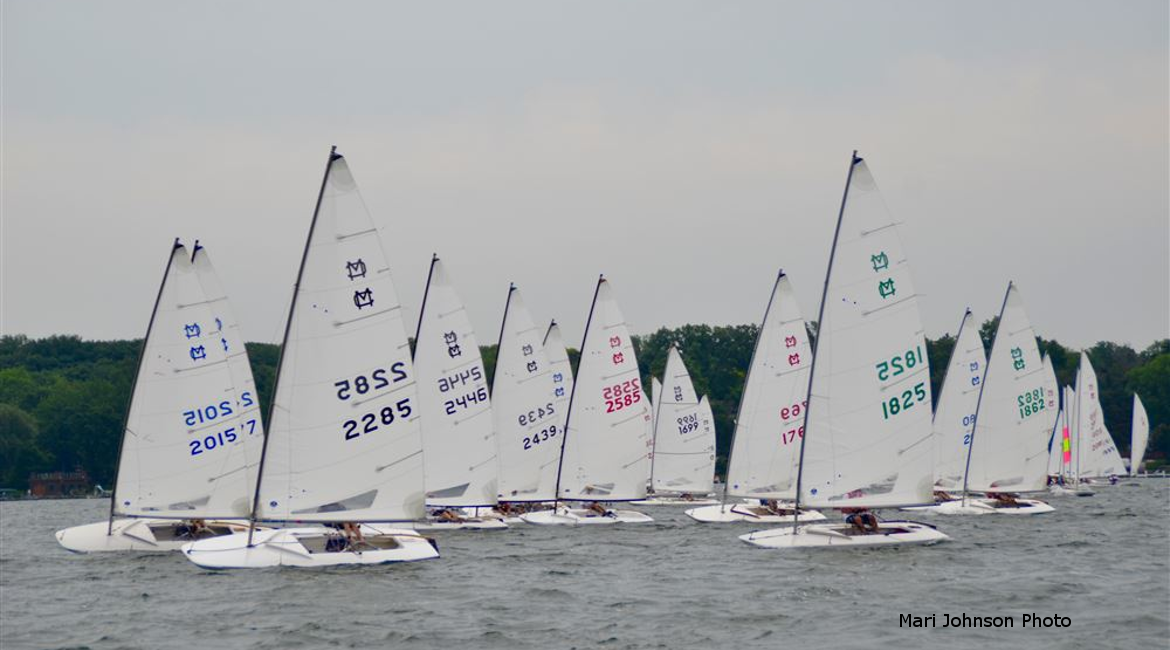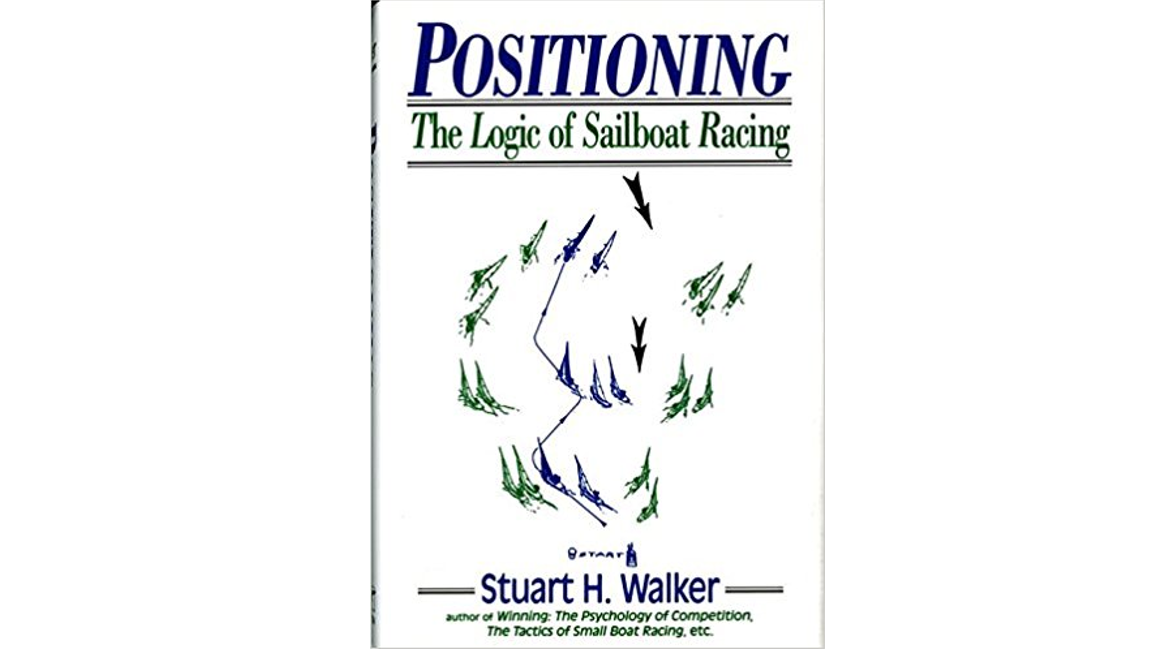We all know that sailing the lifted tack is a fundamental rule of thumb for upwind strategy. You’d think it would be easy to apply, but sometimes it’s hard to recognize the lifted tack, especially without a compass. Even if you use a compass, there are traps to avoid.
Based on mistakes we’ve made and questions from newer sailors, we decided to address the cues and traps involved in recognizing the lifted tack.
Terms
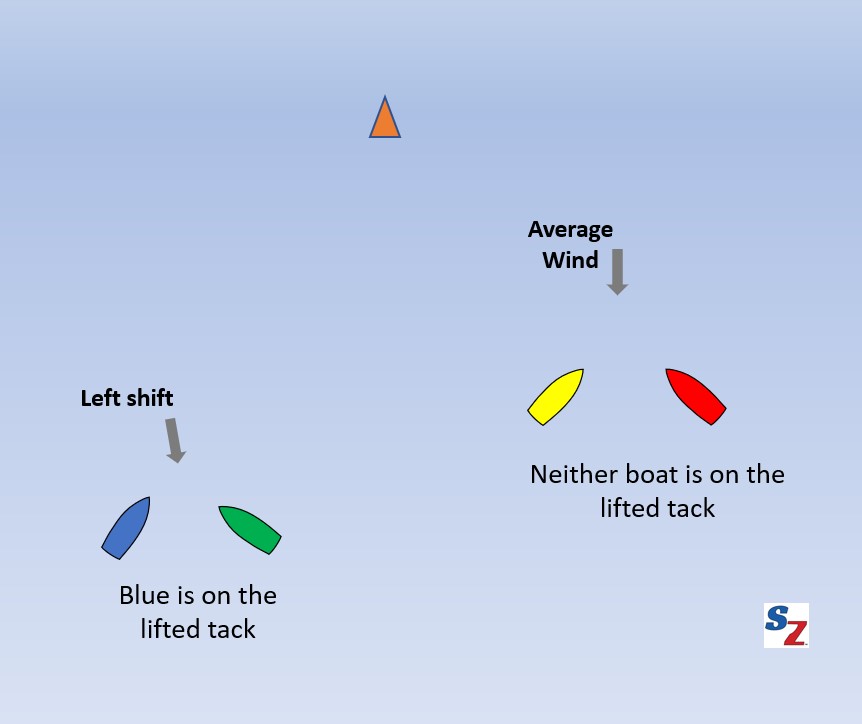
First, let’s clarify some terms that could cause confusion:
- The lifted tack is the tack that results in more upwind progress compared to the average wind direction. If the wind shifts to the right of average, starboard is the lifted tack. If the wind shifts left of average, port tack is lifted. When the wind is in the average direction, neither tack is lifted.
This definition is not the same as “the tack that points your bow closest to the mark,” which is the definition many sailors use. See our post on Ladder Rungs to learn about the fallacy of relying on mark placement. - The headed tack is the opposite of the lifted tack.
- A lift is a shift or velocity increase that lets you make more upwind progress compared to your current heading. Don’t confuse a lift with the lifted tack. If you’re not on the lifted tack to begin with, getting a small lift may or may not be enough to put you on the lifted tack.
- A header (or knock) is a shift or velocity decrease that lets forces you to make less upwind progress compared to your current heading. Again, don’t confuse a header with the headed tack.
Do I Need a Compass to Recognize the Lifted Tack?
Not necessarily. A compass is precise and makes it easy to identify the lifted tack, but there are tradeoffs. A compass puts your head in the boat and doesn’t force you to develop your visual skills. If you sail on a small lake, a compass is probably not necessary, although sailors like Greg Fisher recommend a compass for all racing. If the lake is bigger, it’s harder to use shore references, so a compass becomes more useful. However, some sailors with highly developed visual skills do fine without a compass on the bigger lakes.
For more about using a compass, see our post Race Compass Smarts: When and How to Use One.
Seven Cues to Recognize the Lifted Tack Without a Compass
Let’s assume you want to develop your visual skills and bypass the compass. To get good, you need to use multiple cues. Here are seven, beginning with the simplest and progressing in complexity. Each of these has traps to avoid, which we discuss in the next section.
#1. Am I pointed toward the mark?
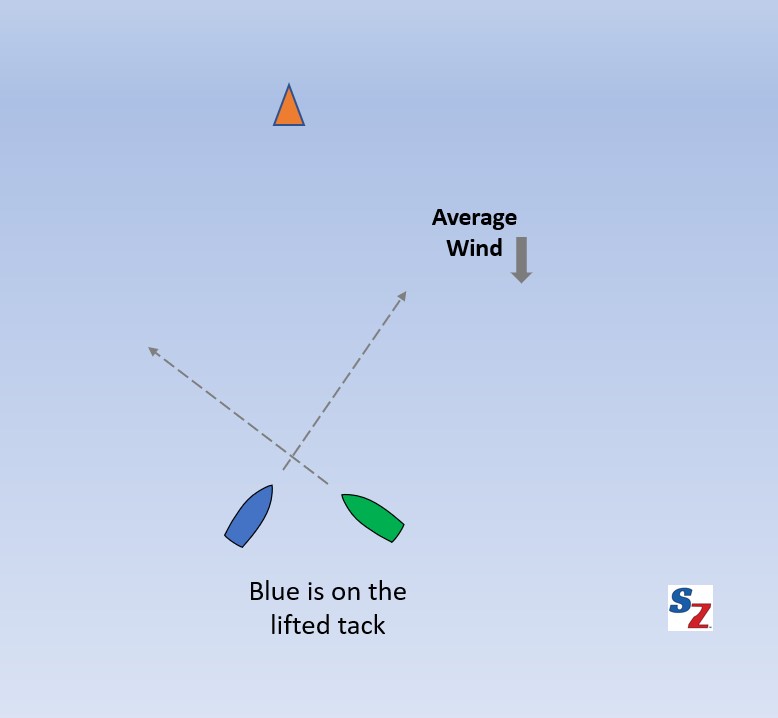
If you’re on the lifted tack, you won’t have to turn your head very far to see the mark. Even though it relies on mark placement and not on the average wind direction, this cue works most of the time.
Traps to avoid (see section on traps): wind velocity changes, course position, and skewed course.
#2. Would I be pointed closer to the mark if I tacked?
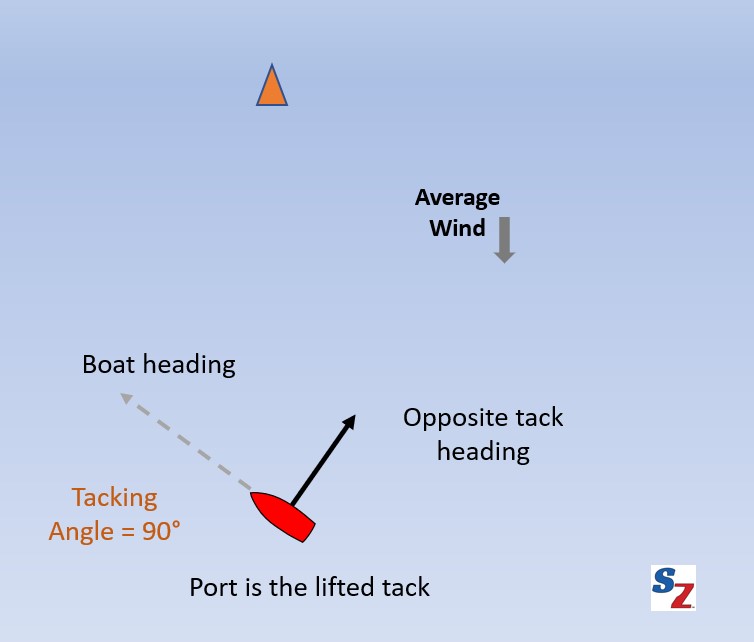
This method requires you to visualize your heading on the opposite tack. The difference between your headings on the opposite tacks is called your tacking angle, which is probably somewhere between 80-100⁰, depending on the wind velocity and type of boat. Practice tacking in various wind velocities to develop reference points. For example, if your tacking angle is 90⁰, your center traveler will show you the heading on the opposite tack. You can also add tacking lines to your boat, as discussed in our post Simplified Tacking Lines for Better Judgments.
Traps to avoid: wind velocity changes, course position, skewed course.
#3. Are other boats lifted or headed?
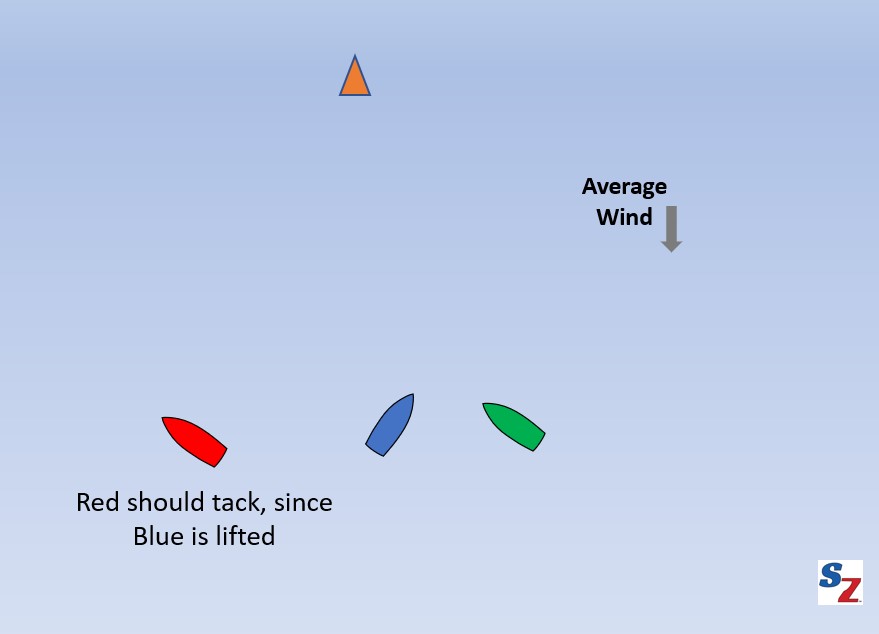
If you’re around other boats that are on opposite tacks, you can usually tell which tack is lifted by comparing their headings. Assuming they are in the same wind, you can then choose to sail on the same tack as the lifted boat(s).
Traps to avoid: wind velocity changes
#4. How has my heading changed compared to a shore reference?
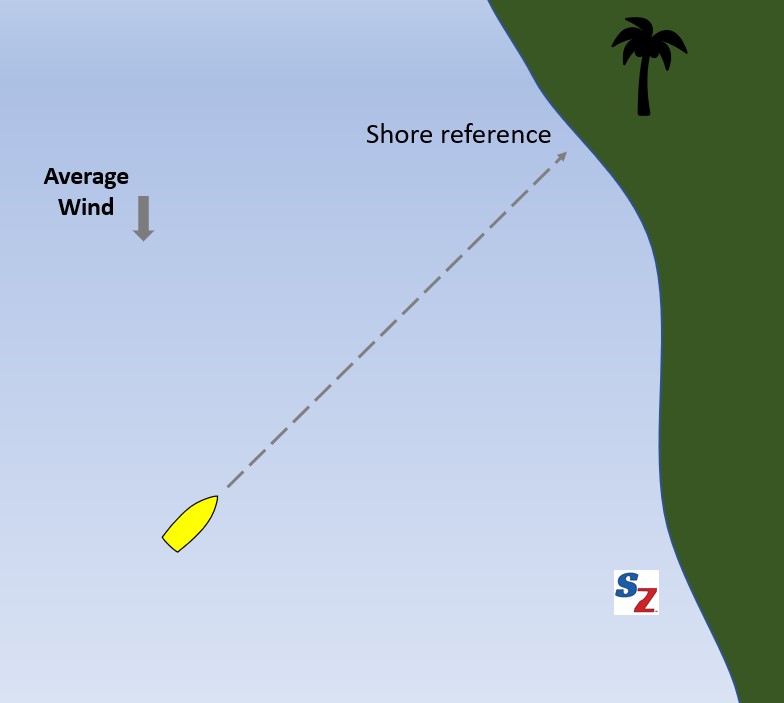
After you tack, get a sense of your heading by sighting through your bow to a shore reference. Then monitor for changes. If you get headed far enough, you’re probably not on the lifted tack anymore.
Traps to avoid: wind velocity changes, small headers that leave you on the lifted tack
#5. What is the average wind direction?
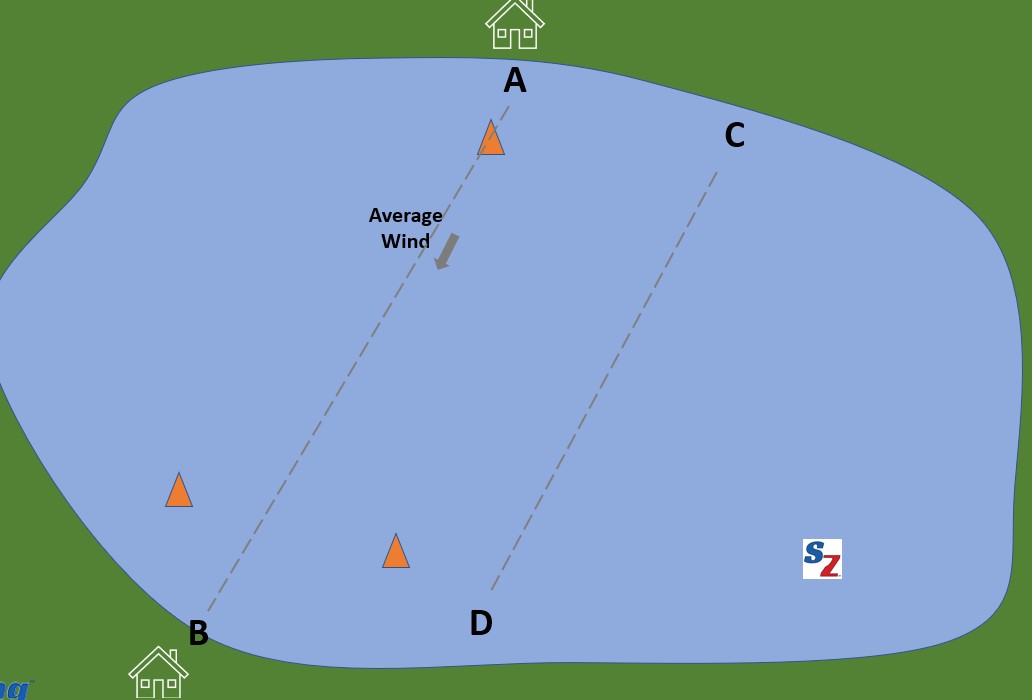
The remaining cues rely on visualizing the actual wind direction during the race and comparing it to the average wind direction. To use these cues, you must find the average wind direction before the race. As part of your pre-race routine, go head to wind frequently. Then picture the average wind direction as a line with two shore references. Learn to carry that direction in your mind as you move around the course.
For example, in the starting area you might find the average wind is aligned with shore references A and B. If you remember these references, it will help you visualize a parallel line (the line C-D in the drawing) in another area of the course.
If your pre-race time is limited, you can visualize the average wind direction based on the course set by the race committee. This is only useful to the extent that the race committee has done their job well.
#6. What is the actual wind direction based on my heading?
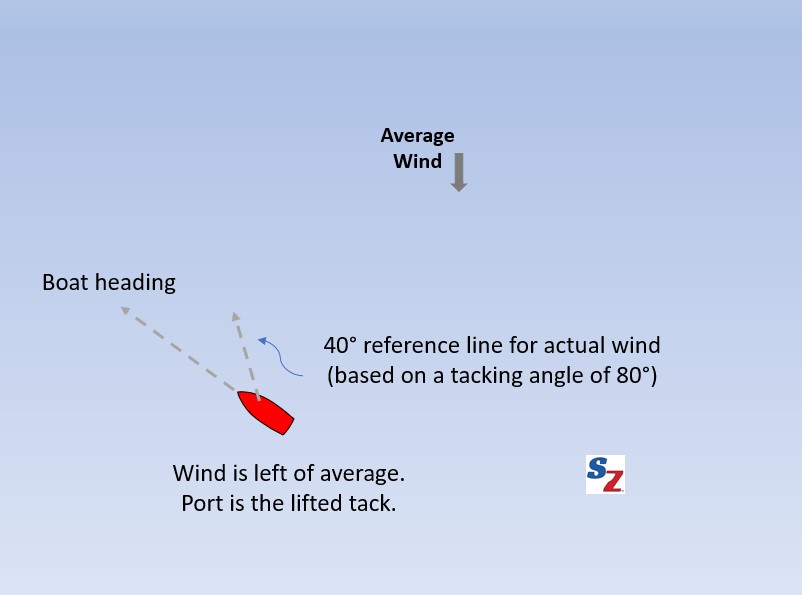
While sailing upwind, try to visualize the actual wind direction based on your heading. The actual wind will be somewhere between 40-50⁰ to windward of your bow. To practice this, get trimmed up and sail close hauled. Pick a point on the windward side of the foredeck that indicates where you think the wind is coming from. Go head to wind and check the accuracy of the point you chose. Read more about this in our post on Ladder Rungs.
Once you can sense the true wind direction based on a bow reference, compare it to the average wind direction you visualized before the race. If the true wind direction is left of average, then port tack is lifted, and vice-versa.
Traps to avoid: wind velocity changes, permanent wind shift
#7. What is the actual wind direction based on ripples or moving puffs?

We covered this cue in our post Seeing Wind on the Water – Improve Your Skills. In short, the small ripples on the water near your boat line up perpendicular to the wind. Use this to visualize the actual wind direction and compare it to the average wind to tell whether the wind is right or left of the average.
Similarly, compare the direction of a moving puff to the average wind direction. If the puffs are moving at you from the left of the average wind, port tack will be lifted when the puffs arrive.
Traps to avoid: permanent wind shift
Traps to Avoid
Recognizing the lifted tack is a continuing task. You can get fooled by any of the following changes:.
Small headers that leave you on the lifted tack
Headers force you to sail further away from the mark. However, a small header may still leave you on the lifted tack. If you’re lifted 15⁰ above the average wind and get a 5⁰ header, you’re still lifted by 10⁰ to the average wind. You may want to tack for other reasons, but you won’t end up on the lifted tack.
Wind velocity changes
Changes in wind velocity affect your heading and make it harder to identify the lifted tack.
A puff may let you sail 5-10⁰ closer to the wind. If you sail into a puff and find that you’re not able to sail higher, it’s highly possible that you’re no longer on the lifted tack.
An extended lull may force you to sail 10-15⁰ lower. You may not realize this and think you’re no longer on the lifted tack. If you tack, you’ll probably find that the other tack points you further away from the mark.
Course position
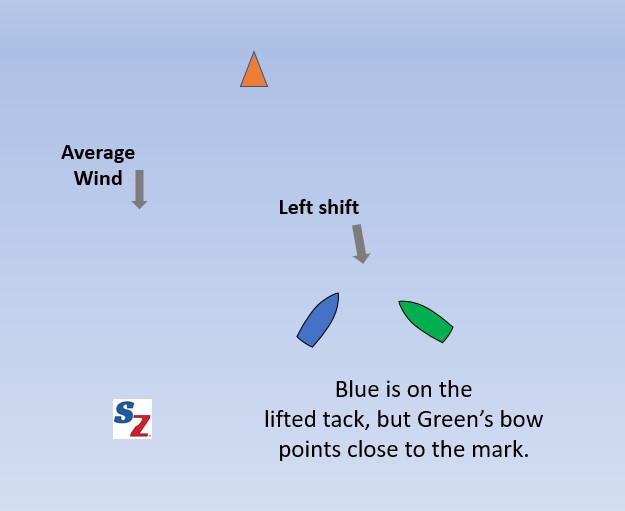
If you’re not centered on the course, your bow may not be pointing close the mark, even when you’re on the lifted tack. See the diagram. Blue is on the lifted tack, but Green’s bow is pointing closer to the mark.
Permanent wind shift
If the wind shifts permanently during the race, you must recalibrate to the new average wind direction. If you use the old visual references or compass numbers, you’ll be off.
Skewed course
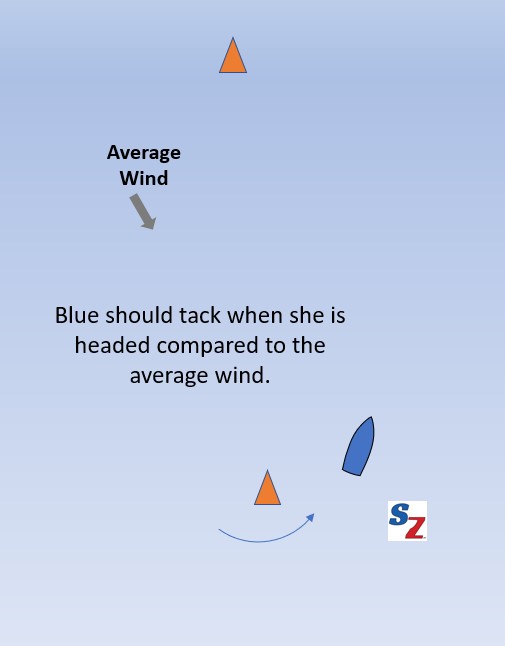
If the course is not square to the wind, one tack will always seem to be lifted. This may result from a permanent wind shift. Unless you can lay the mark on one tack, you still need to decide when to take a header and when to tack. In this situation it’s best to forget the mark and recognize the lifted tack relative to the average wind direction. Tack when you are headed below the average and you’ll sail the shortest distance.
Related Content
Sail the Lifted Tack – How and When
How to Sail Fast up the First Beat When you Have Oscillating Shifts – Dave Dellenbaugh in Sailing Breezes

